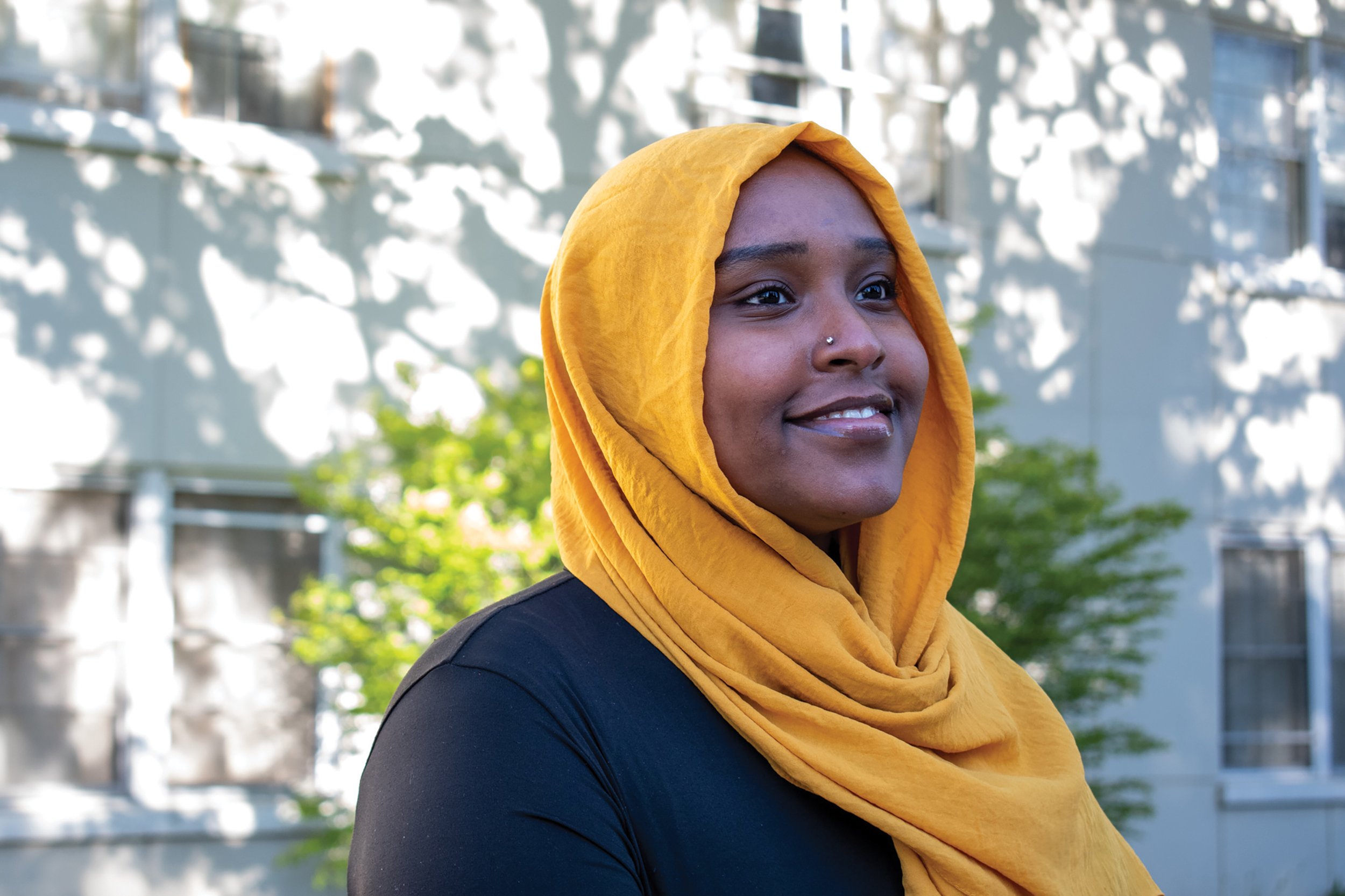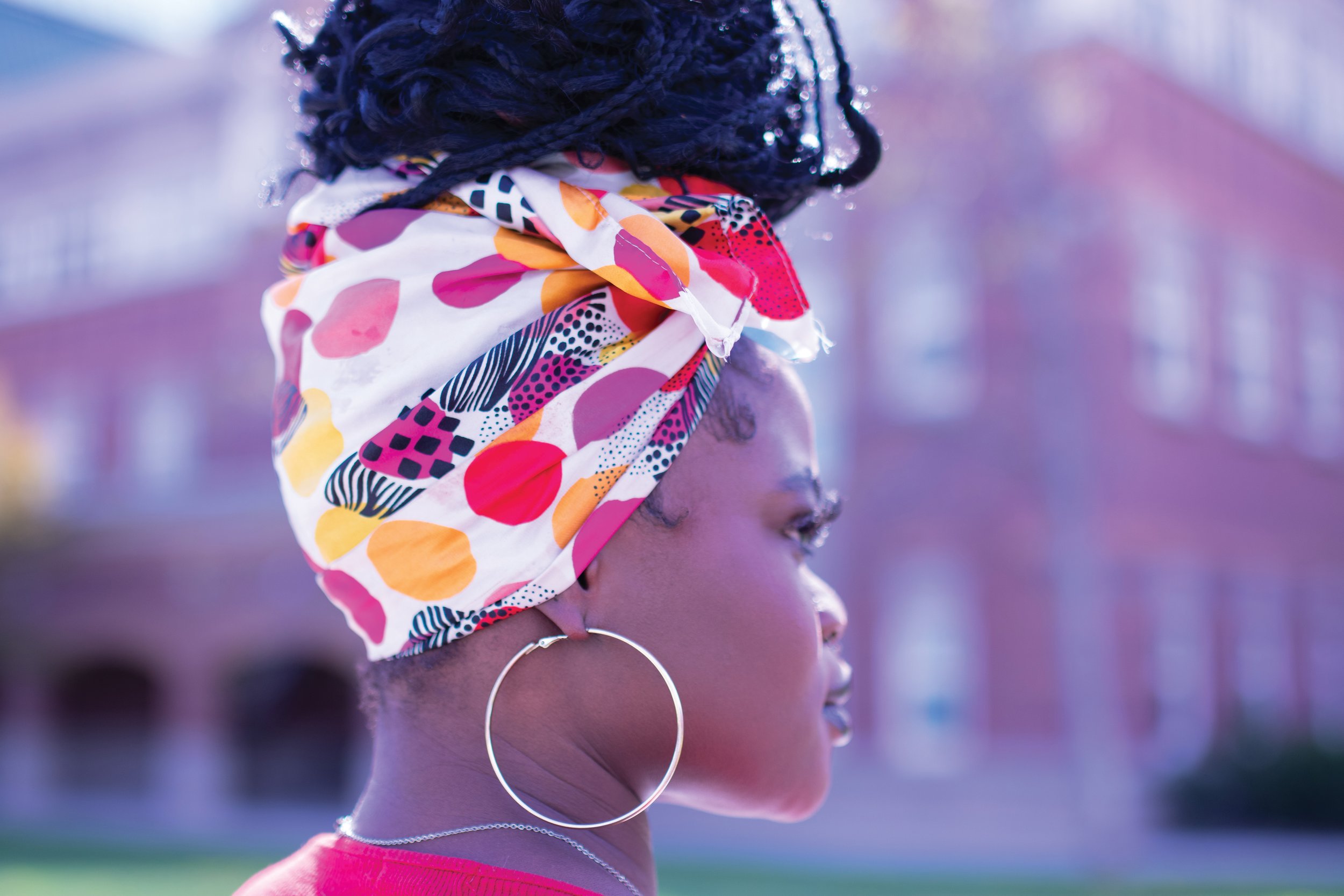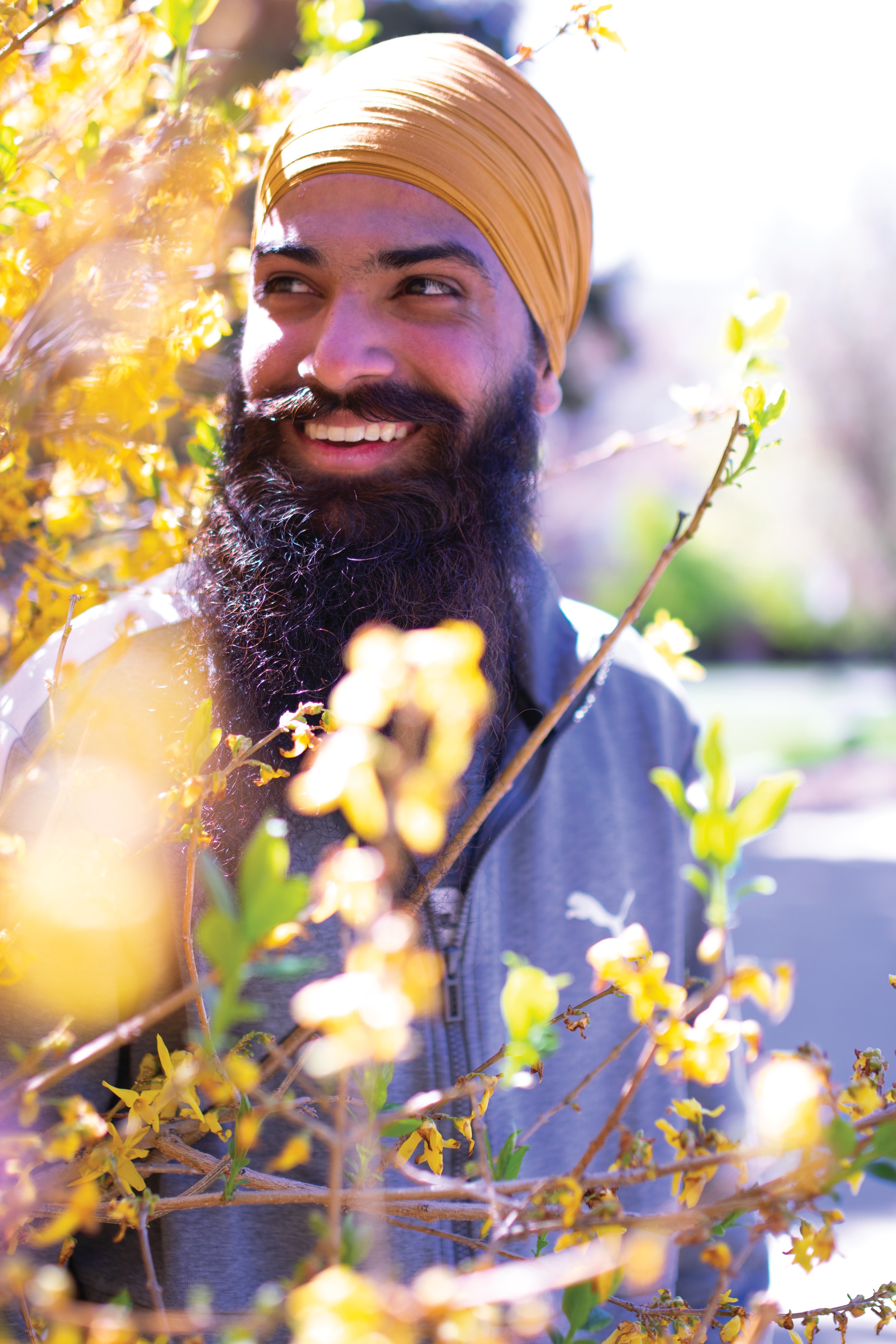Cultural Head Coverings
Story by Omar Benitez | Photos by Max Cox | Design by Thong (Samuel) Lam & Katie Jo Stewart
‘Go home!’ ‘You don't belong here!’ ‘Are you forced to wear that?’ These are comments made to people wearing head coverings in America. Racism and aggression against people wearing head coverings is still all too common and often pushes them not to wear them at all.
But a head covering is not just something you take off, it's part of people's identity, it’s who they are. And it’s part of some of the students here at CWU. These headcoverings are a lot more than just an article of clothing. They symbolize faith, culture, identity and are unique in their own way.
Variations
Head wraps or head scarves in America, have a bit of a dark history dating back 1700’s during to slavery times. According to the article “When Black Women Were Required By Law to Cover Their Hair” from Vice, female slaves were forced to wear them to cover their hair due to tignon laws. It has since been reclaimed by African women of all cultures throughout the continent. It is now a symbol of beauty and African culture.
For CWU student Victoria Dennis, senior psychology major, head scarves have become a part of everyday life. She's of Liberian descent, so she's been learning from a young age. “I watched my mom and siblings do it all the time. So it was like a reinforcement, like hey, I have to do it too.”
The turban, or pagg as it’s known in Punjabi, originates from the Punjab region of India. It has become an important part of Sikh culture for men as a symbol of their faith. CWU student Inderjit Singh, senior film, originates from India, and for him a turban symbolizes his faith, where he comes from and most importantly who he is.
In Islam, the hijab is worn by Muslim women as a a way to show modesty by covering their hair. Wearing a hijab for CWU student Ibtisam Siraj, sophomore law and justice/political science, has been automatic from a young age, “when you grow up doing something since you were a kid, it just becomes a part of you.”
Significance
Of course, every head coverings has its own meaning and significance behind it. But each person has their feelings on what it means to them personally to wear a head covering.
Dennis loves how despite their dark past, headscarves have been reclaimed by African women. It now helps Victoria stand out and show her culture proudly. “For me, it allows me to know I’m different but I’m a proud, beautiful, intelligent, elegant woman. It helps me to know where I came from.”
For Singh, turbans are a strong symbol of his Sikh faith. The meaning behind the turban is to show respect, and to show that all people are equal. So for him being able to wear it means being able to be his genuine self. “It's like my chin is always up when I'm wearing a turban. It's the greatest feeling. I know that that's myself when I have a turban on,” says Singh.
“It's like a part of who I am, without it I wouldn't be who I am right now,” says Siraj. For her wearing a hijab means being able to practice her religion and proudly show she’s a Muslim woman.
Individuality
The potential to add your own touch and make a head scarf unique is endless. With many different colors and patterns to choose from, your possibilities are as many as your mind allows. Besides changing the color there are also of course several different ways to style and tie your headscarves, so get creative.
Similarly to headscarves, turbans can also be of many different colors as well as patterns. The changing of colors and patterns does not affect the meaning in either as well. There are also different types of turbans to choose from, so make sure you get the one that’s right for you.
Hijabs do have a few different variations, some of these include the jersey style and the chiffon style. The chiffon style is a thinner looser fitting hijab that's best suited for warm weather, while the jersey style is thicker and better suited for milder weather. Here it’s all about comfortability, so make sure to get something that feels snug.
Head Coverings and Discrimination
The reality here in America for people who wear head coverings is that often times they still face racism or discrimination. We see it often in the workplace and in sports.
“I have seen stuff on the news, in media where a lot of African Americans who just can't really go into the workforce with their hair wraps,” says Victoria.
Just like headscarves, turbans have also been discriminated against in the workplace as well. Although certain jobs are revamping their dress codes to be more inclusive of head coverings, in many professional setting jobs head coverings are still not allowed.
People who wear head coverings often still experience harassment or assault.. According to American Civil Liberties Union, 69% Muslim women who wore a hijab reported at least one incident of descrimination for wearing their head covering.”
Despite the decrimination and racism, these CWU students still proudly wear their head coverings because it is who they are. To be themselves genuinely everyday, it’s something we all deserve to be.




